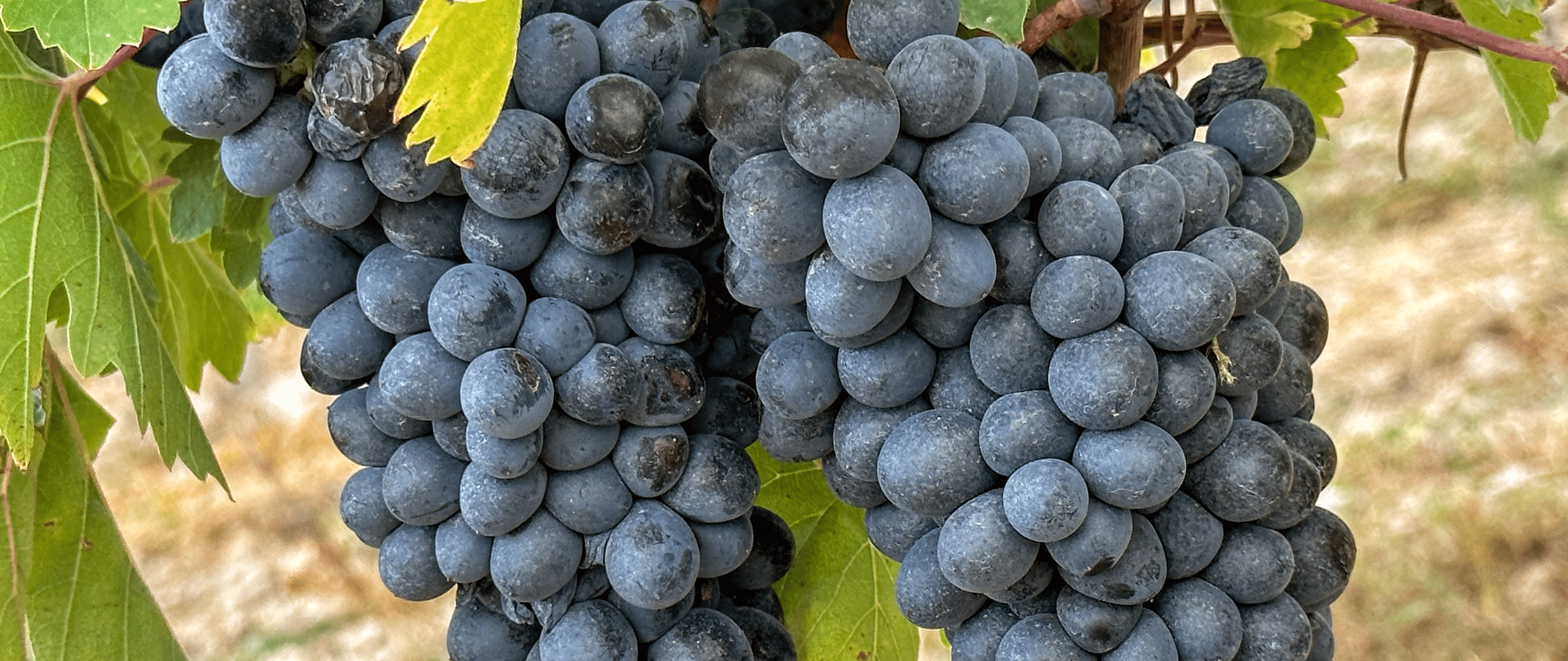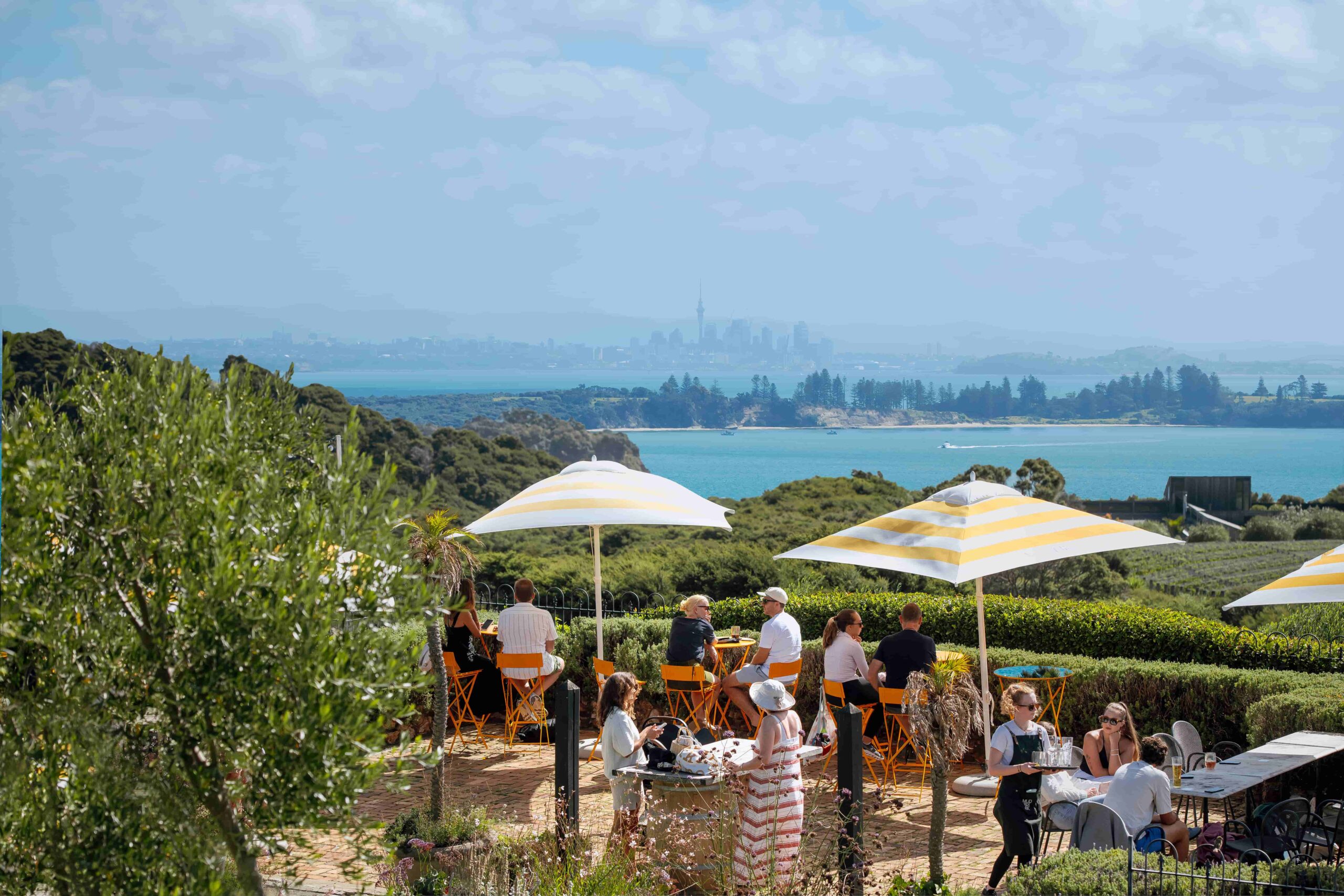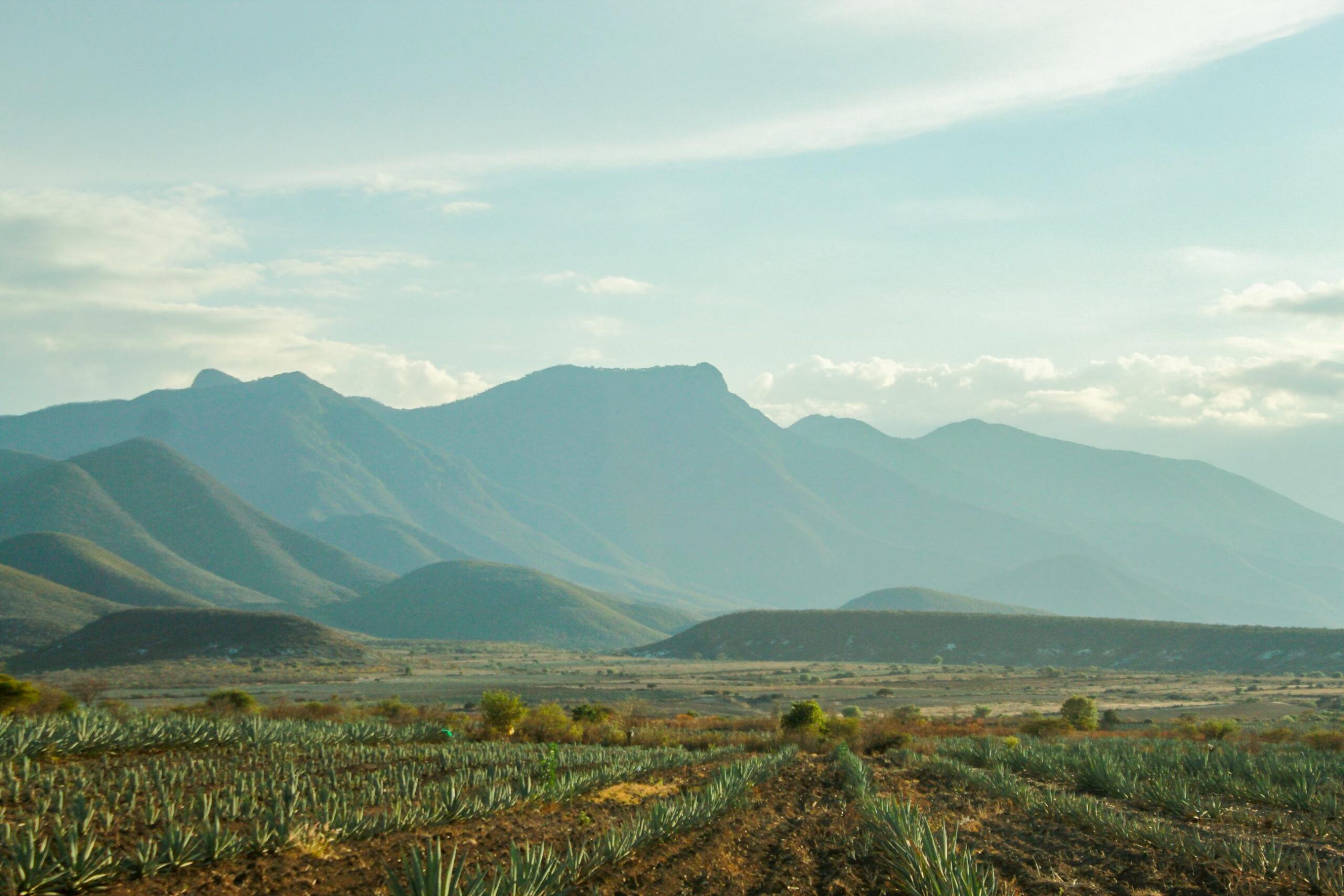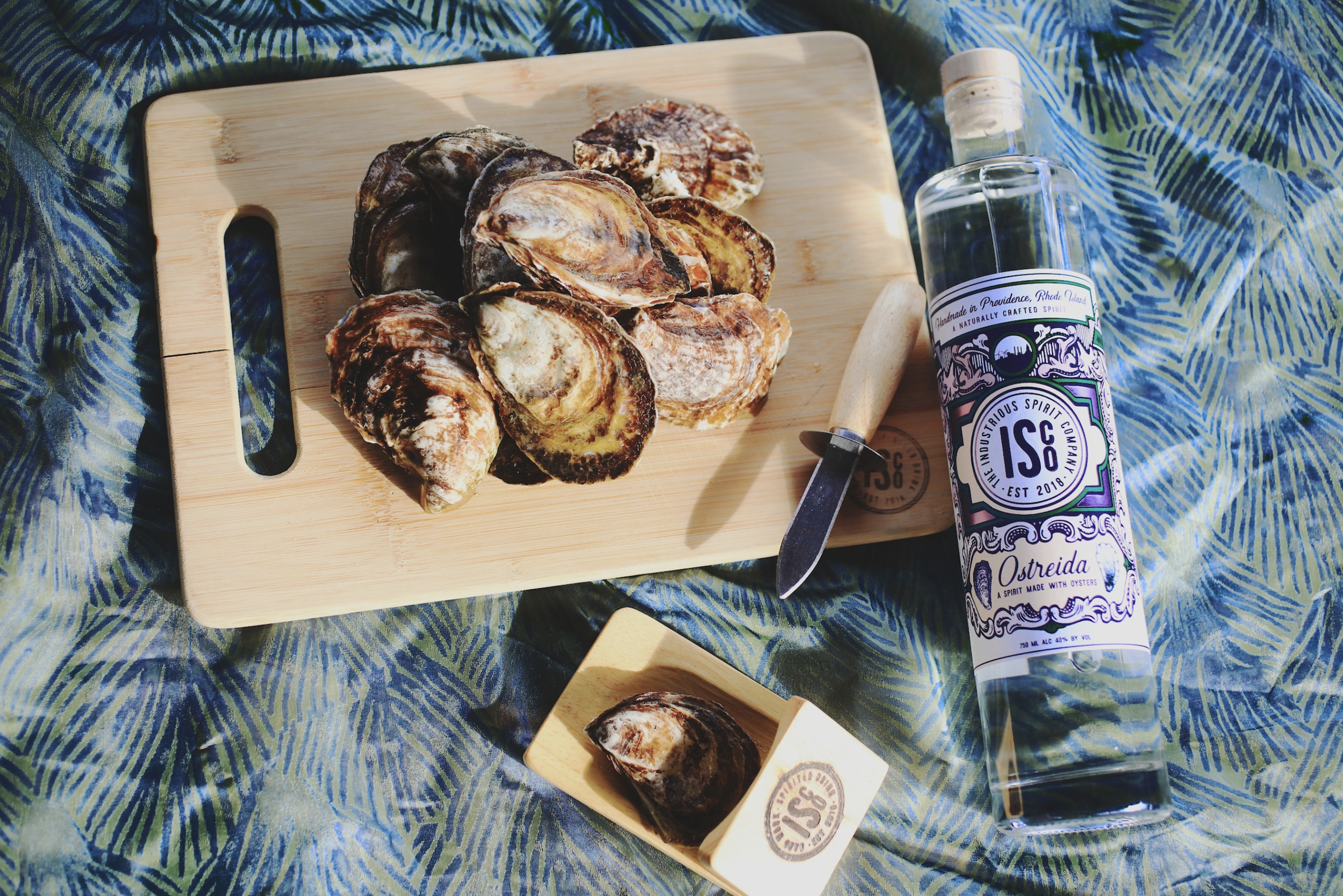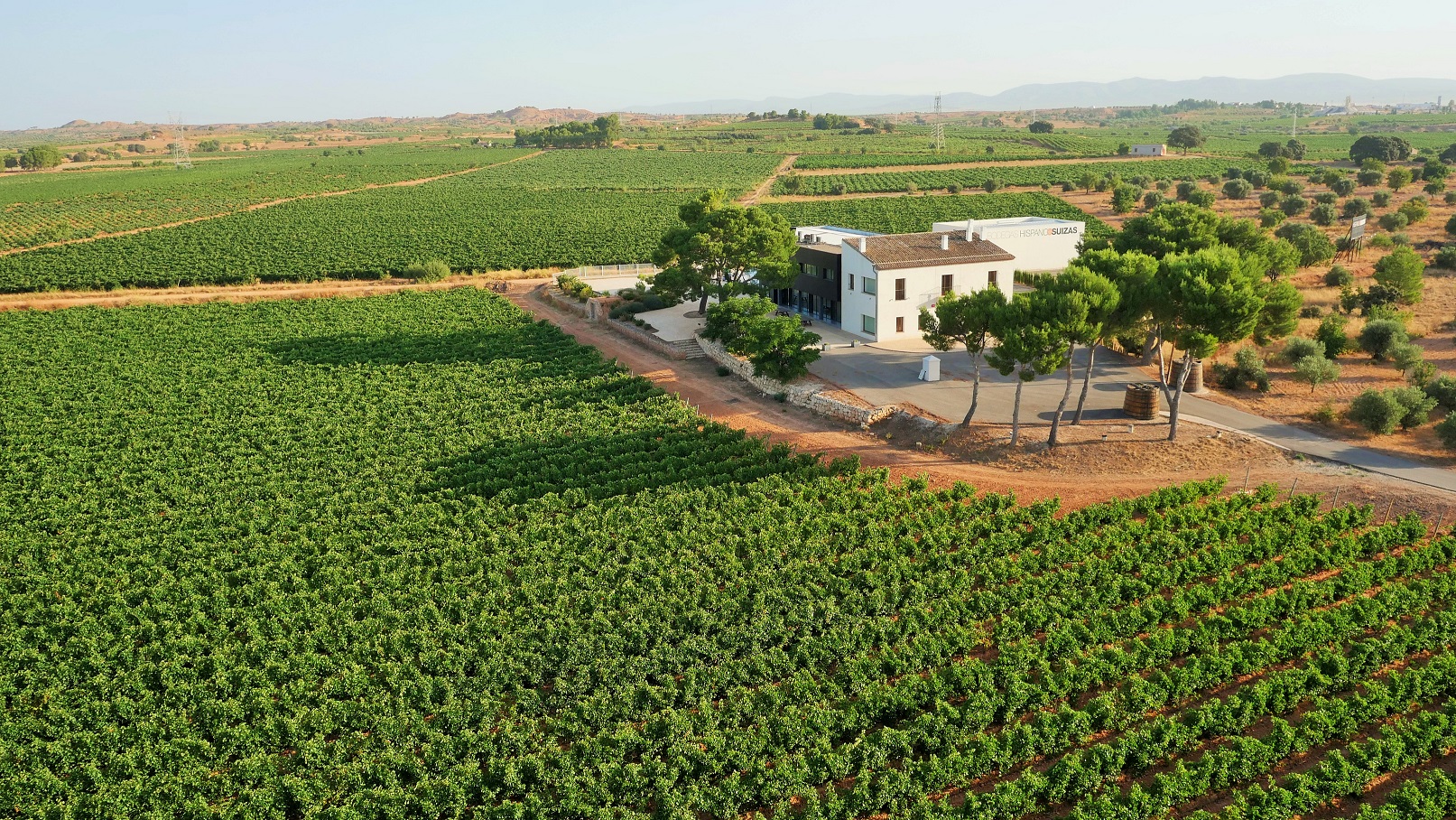“Where does environmental and community impact fit in if wine experts only evaluate what’s in the glass and not how it got there?”
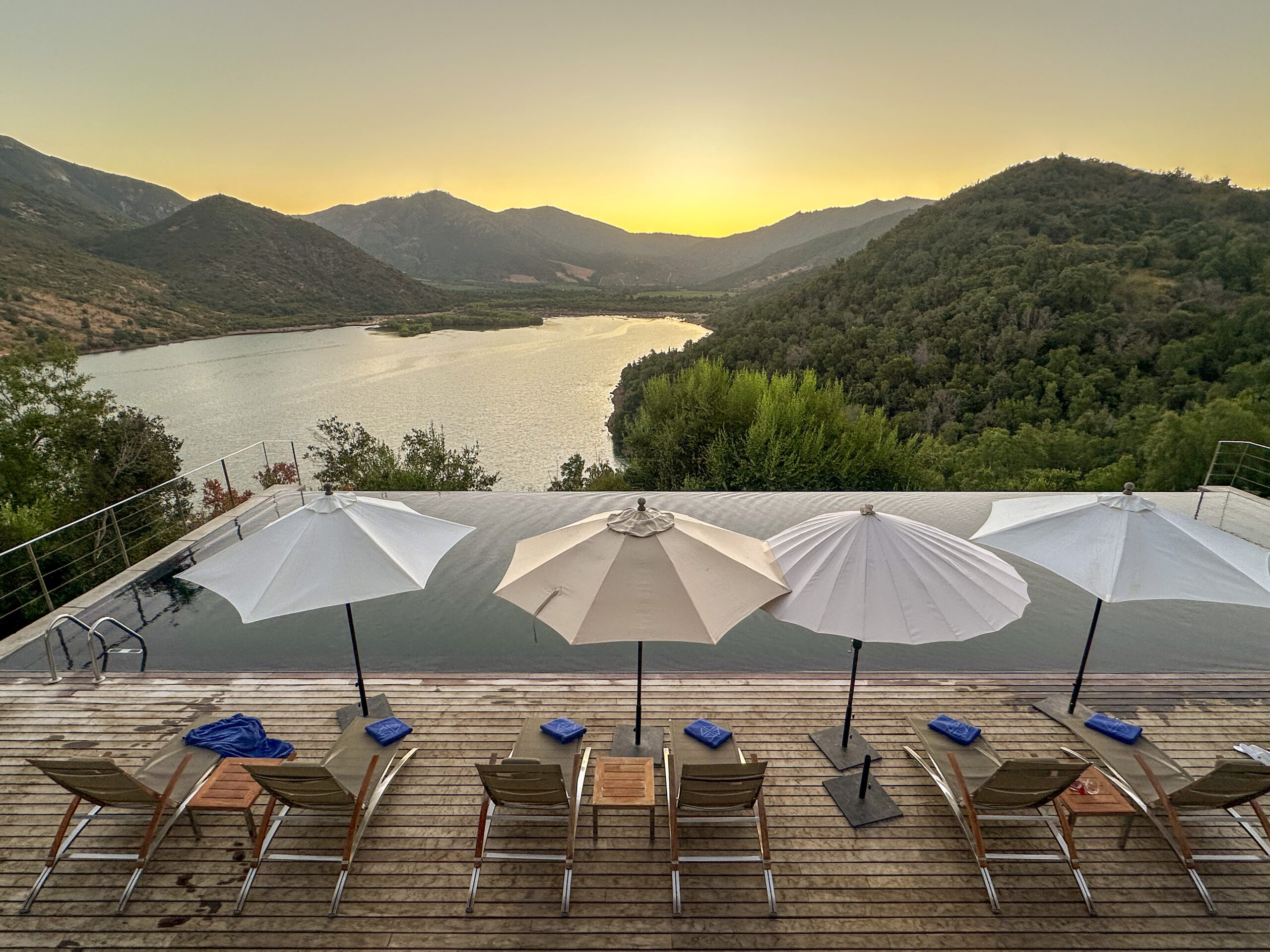
Courtesy of Lauren Mowery.
Best.
What does that word mean in the context of wine? High scores from critics? High prices at the winery? Wines that earn tens across the board on the BLIC (balance, length, intensity, complexity) analysis test? Where does environmental and community impact fit in if wine experts only evaluate what’s in the glass and not how it got there?
Azure Road’s editors have a deep background in wine. They also have an interest in promoting wineries that do the work to ensure the land they steward and the people they support are cared for as much as the liquid in the bottle.
To Azure Road, ‘best’ means all the above.
Here’s the definitive list of Chile’s best wineries.
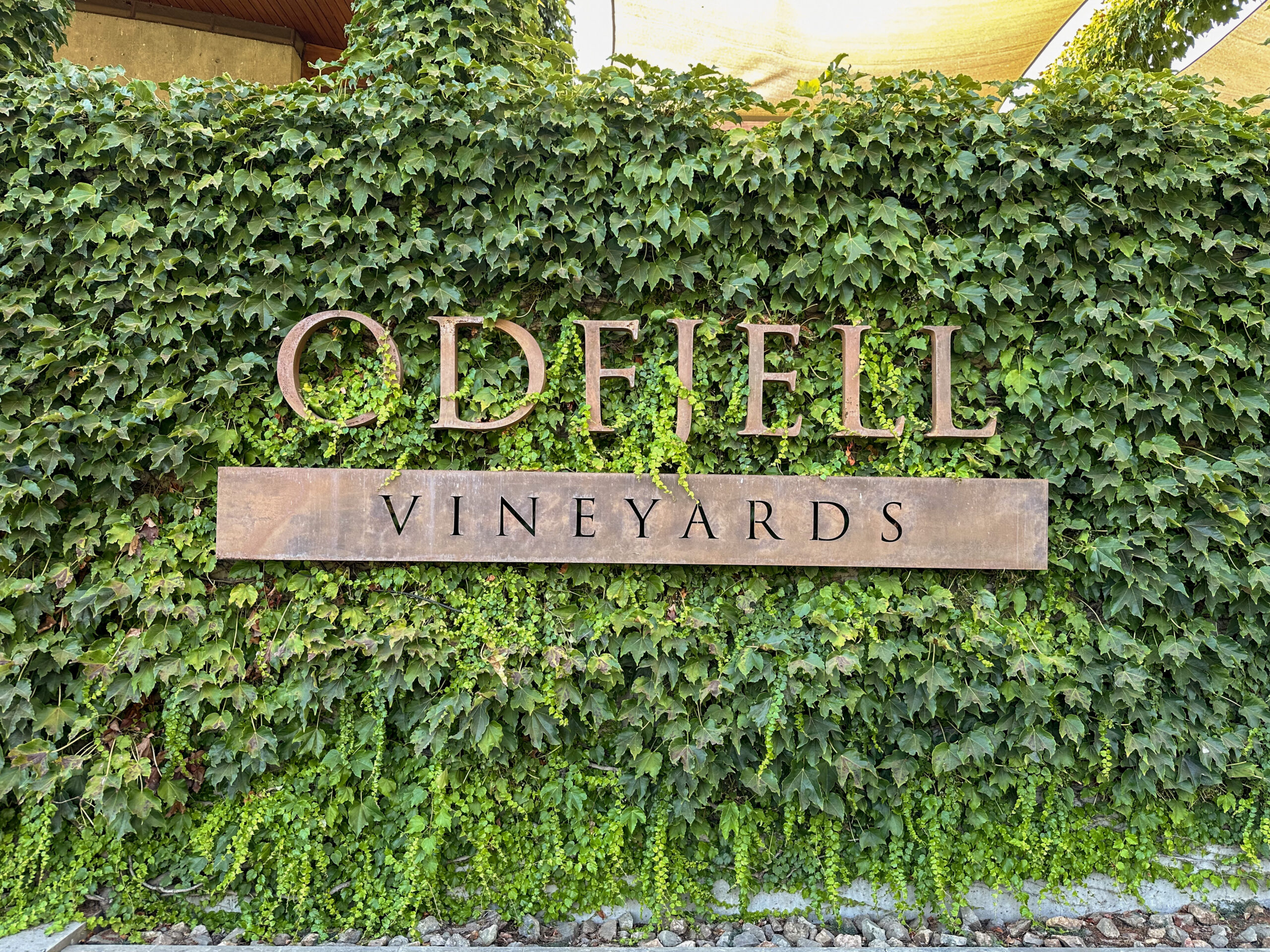
Courtesy of Lauren Mowery.
Back in the 1980s, Norwegian shipping magnate Dan Odfjell spent his life traveling, conducting a large share of his business in South America. One trip brought him to the Maipo Valley, Chile. Falling in love with the scenery and dry sunny climate, he decided to lay down roots and start a fruit farm. Today, that farm breeds Norwegian fjord ponies and grows wine grapes for his brand Odfjell Vineyards. The gravity-flow winery, designed by his architect son Laurence, cost $6.5 million to complete and showcases the brand’s low-impact ethos. Today, all vineyards are certified organic by Ecocert and have been certified biodynamic by Demeter since 2012. Wines are made with minimal intervention, fermented using native yeasts.
Wine to Find: Odfjell, Armador, Cabernet Sauvignon, Maipo Valley
Viña Emiliana
Viña Emiliana boasts a lot of superlatives: the world’s largest organic winery and the first winery in Latin America to produce a biodynamic certified wine. Now, it can claim a new title: the first Chilean company to become Regenerative Organic Certified® (ROC®), an international accreditation for regenerative organic agriculture. Emiliana was founded at the end of the 1990s by Rafael and José Guilisasti, two ambitious men who anticipated the wine market evolving in favor of conscious consumerism. Along with winemaker Álvaro Espinoza (of Antiyal), they began converting a conventional Chilean winery into a 100% organic and biodynamic winery with the objective of creating high quality wines while respecting people and the environment. Today, the company sells over 1 million bottles a year.
Wine to Find: Coyam, red blend, Colchagua Valley
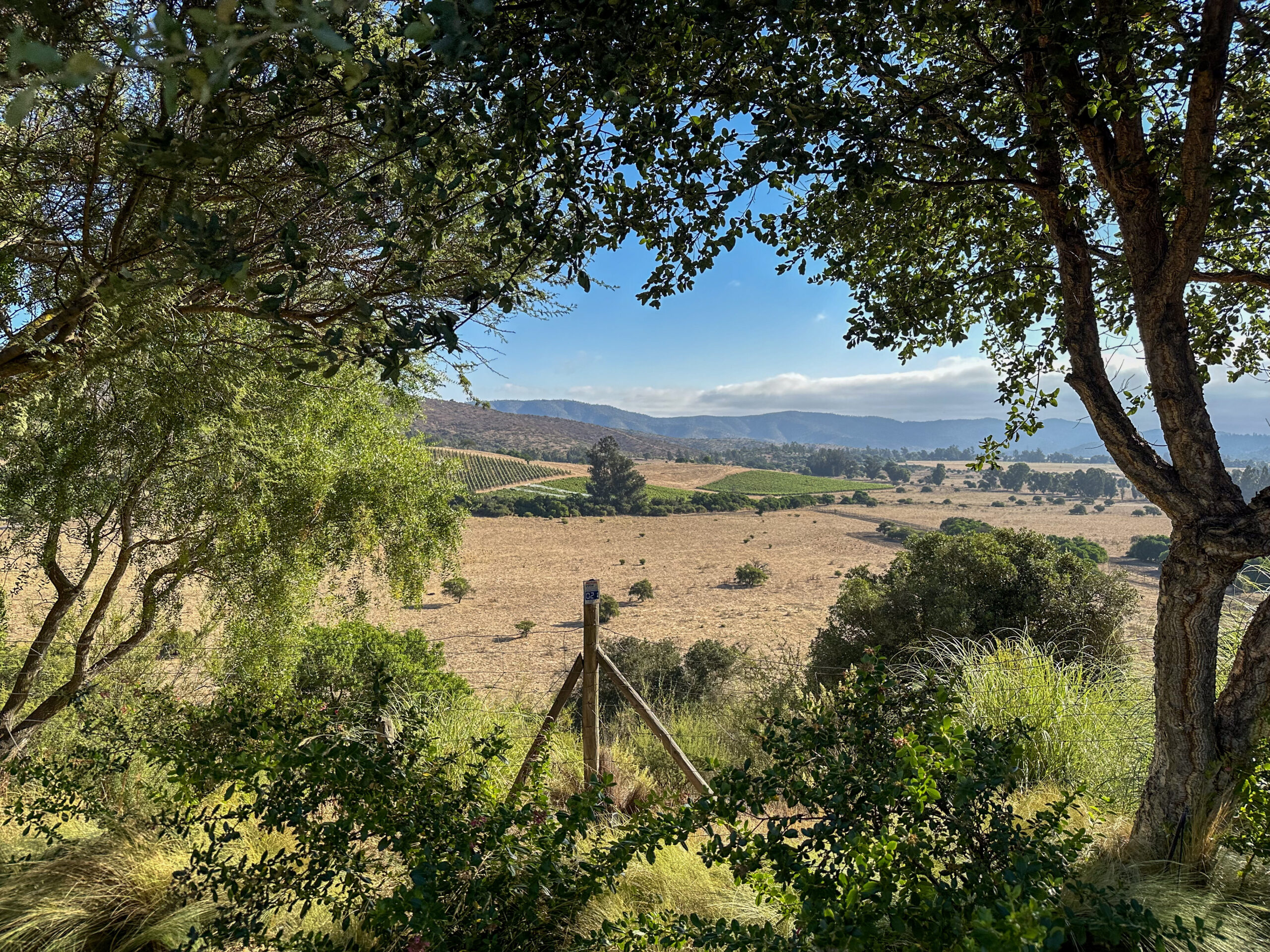
Courtesy of Lauren Mowery.
Originally from Croatia, the Matetic family arrived in Chile over a century ago, finding success in their new homeland as sheep and dairy farmers. In the early 1990s, the family expanded into the wine business. They purchased an estate in the coastal region of San Antonio Valley, located 55 miles west of Santiago and just south of the Casablanca Valley. The region has become well-known for its cool-climate wines made with Sauvignon Blanc, Chardonnay, and Pinot Noir. Matetic introduced Syrah to San Antonio, which thrives as a South American version of a Rhône Valley wine. Matetic has been certified organic since 2004 and Demeter-certified biodynamic since 2012, and is considered a pioneer of responsible farming in Chile.
Wine to Find: Matetic, Syrah, San Antonio Valley
Founded in the 1990s, Viñedos Orgánicos Veramonte (VOV) helped pioneer Casablanca, a cool-climate valley north of Santiago that was relatively unknown at the time. Today, Viñedos Orgánicos Veramonte is part of González Byass, a family-run company founded in 1835. The estate sits at the extreme eastern end of Casablanca, set against the dramatic beauty of the coastal range, while its vineyards are heavily influenced by the cooling effects of the Pacific Ocean and Humboldt Current. Such growing conditions allow for cool climate winemaking using varieties like Sauvignon Blanc, Chardonnay, and Pinot Noir. The current winemaker, Gonzalo Bertelsen, oversees the 100 percent organic operation, while leading the viticulture team to adopt regenerative farming through measures such as using compost and cover crops to revitalize soils, and sheep to mow. The vineyards are surrounded by 6000 acres of native forest, creating a balanced, biodiverse landscape for healthy vines to thrive alongside natural wildlife corridors and native vegetation.
Wine to Find: Ritual, Sauvignon Blanc, Casablanca Valley
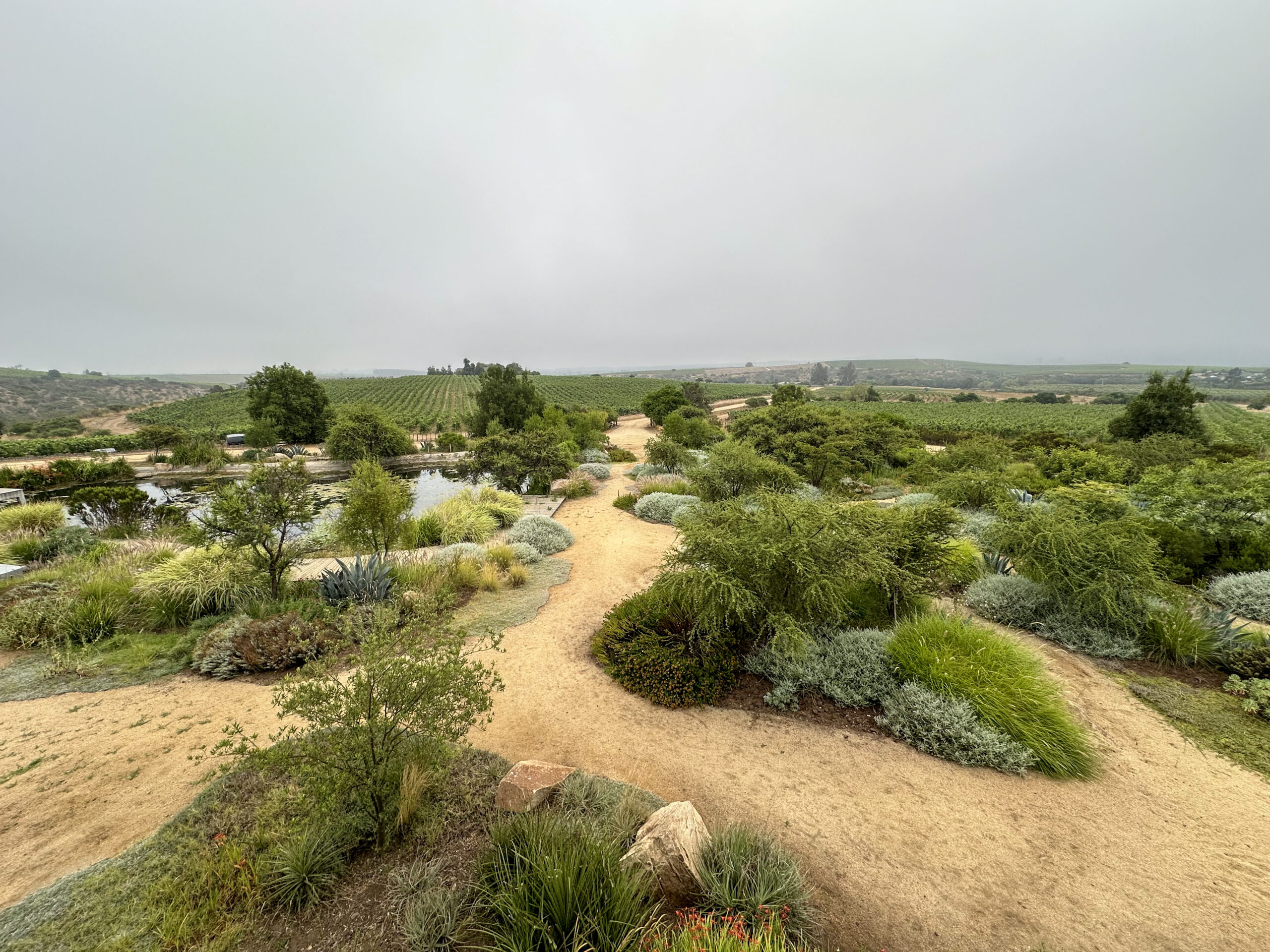
Courtesy of Lauren Mowery.
In 1999, the Garcés Silva family planted vines on their property in the Leyda Valley. Like their colleagues on this list, they were instrumental in developing coastal wine production to capture the cooling influences of the Humboldt Current. In 2002, they founded the valley’s first winery called Amayna, which translates loosely to “the calm after the storm,” a reference to the power of the nearby Pacific. In fact, their gravity-fed winery and vineyards enjoy an unobstructed view of the water, sitting just 7 miles from the coast. Part of the winery’s sustainability efforts include rewilding the local habitat by removing invasive species and replanting with nearly 2000 native trees to include including quillayes, peumos, maitenes, quebrachos, molles, and huinganes.
Wine to Find: Amayna, Sauvignon Blanc, Leyda Valley
Pedro Parra Y Familia
Pedro Parra was born in Concepción, Chile, near Bio Bio and Itata where he raises his family today. Pedro holds a PhD in terroir from the Paris Center of Agriculture and has six years of experience in French terroirs. As a respected consultant working in several countries including Chile, Argentina, USA, Italy, Canada, France, and Armenia, Parra brings an open mind and new framework to winemakers and viticulturists alike. Parra has been described as the leading figure of the ‘New Chile’ movement by the international press, in part because of his constant search for singular terroirs to develop new plantings throughout the country. Parra dry farms old, restored vineyards around Itata, and works minimally in the winery.
Wine to Find: Pedro Parra, ‘Hub’, Cinsault, Itata Valley
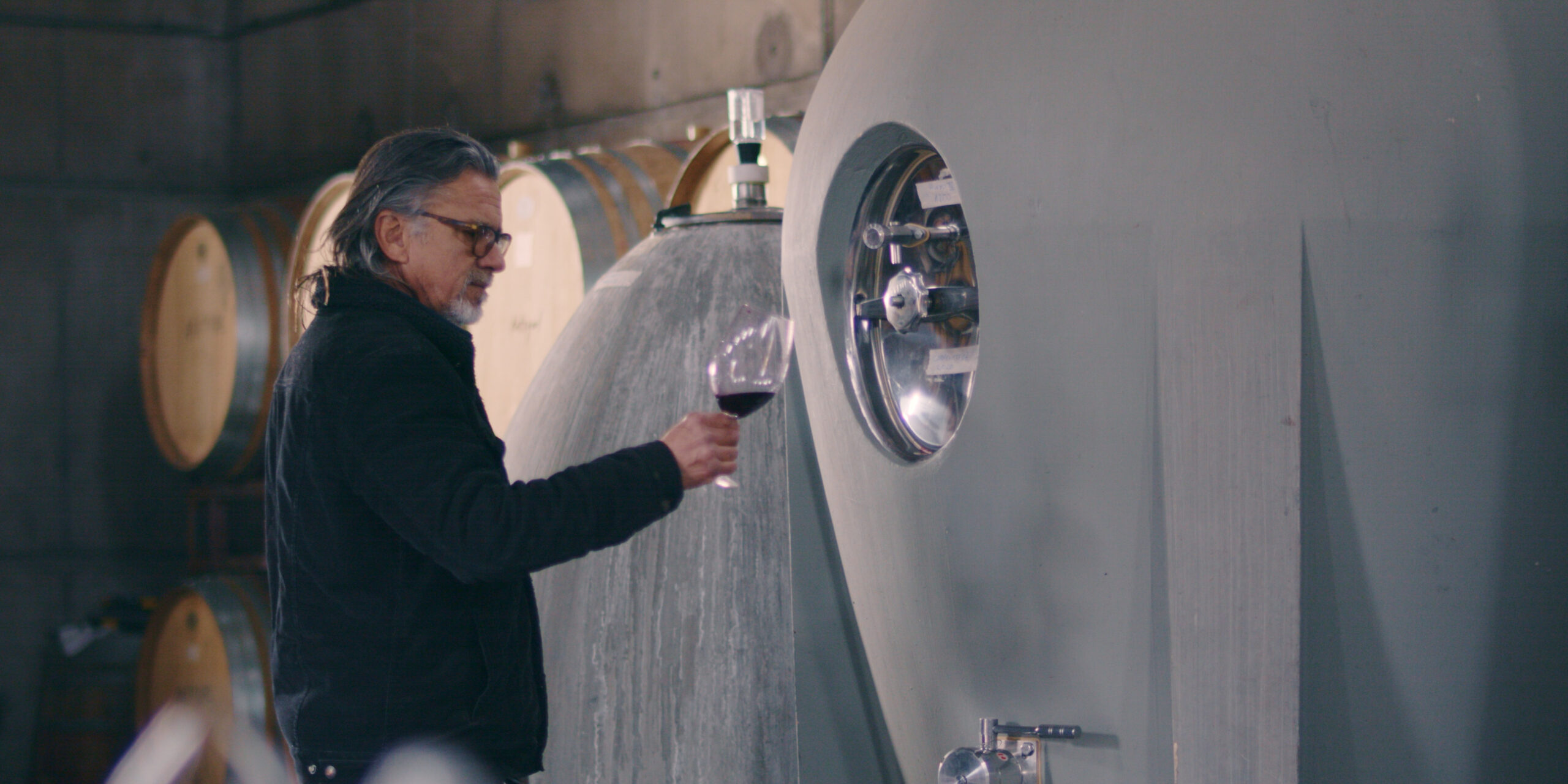
Courtesy of Antiyal.
Antiyal
After graduating with a degree from the University of Bordeaux, Alvaro Espinoza returned to Chile to become head winemaker at Carmen Vineyards. While there, he refined his red winemaking techniques with fruit in the Maipo Valley while helping to produce some of Chile’s first Carménère in 1994. He went on to spend a vintage at Mendocino County’s Fetzer Vineyards in California, where he discovered biodynamic viticulture. While there, Alvaro met Alan York, an international consultant and promoter of holistic agriculture who helped in the design of Antiyal. In 1996, Alvaro and his wife Marina planted just over an acre of Cabernet Sauvignon in Huelquen, launching one of Chile’s first biodynamic vineyards with its 1998 vintage. His lifelong contribution to Chilean wine earned him a nod as one of the World’s Thirty Most Influential Winemakers by Decanter in 2015.
Wine to Find: Antiyal, ‘Kuyen’, Red Blend, Maipo Valley
Ana Maria Cumsille has made wine for decades, first launching her career at commercial wineries. She’s currently the chief winemaker at Viña Carmen. However, she fell in love with Itata, making friends over the years with families who farm small parcels of old bush vines up to 200 years old in the subregions of Guarilihue, Cerro Verde, Trehuaco, and Ranquil. Ana Maria decided to buy fruit from these families to launch her eponymous line of single vineyard bottles of Carignan, Cinsault, Pais, and Malbec, among other varieties.
Wine to Find: Ana Maria Cumsille, ‘Lomas Coloradas’, Carignan, Itata Valley
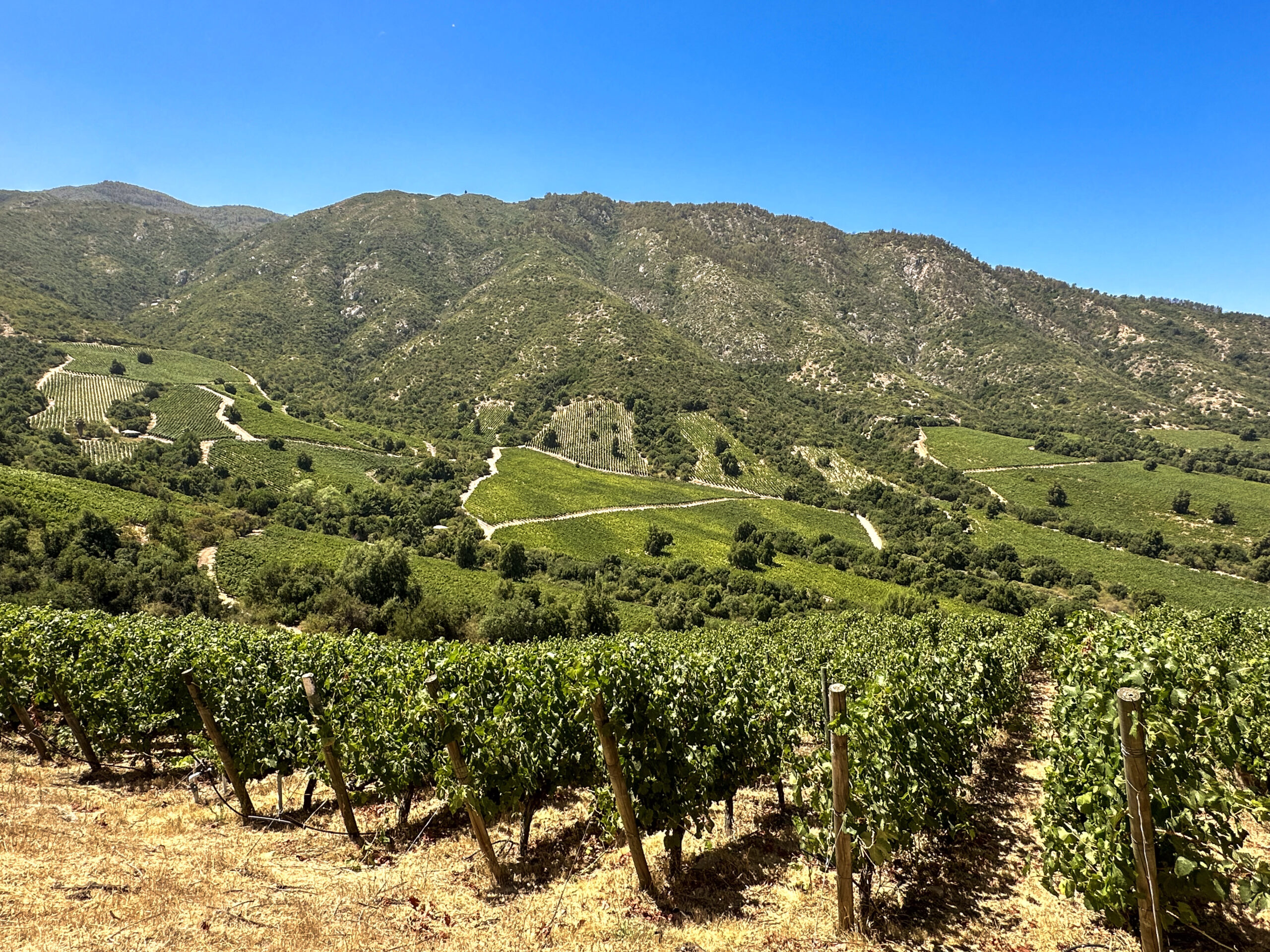
Courtesy of Lauren Mowery.
Founded in 1987, Montes has evolved into an icon winery. Known for its lush, rich and heavily-awarded wines including Carménère, Montes started as an idea of entrepreneurial winemaker Aurelio Montes and business partner Douglas Murray. Today, the Colchagua-based winery has grown to lead the country’s sustainable viticulture efforts. The company employs regenerative principles and is working towards carbon positivity and related certification. Land conservation is also important, the company preserving 1000 acres of adjacent property with native flora and fauna. Wildlife corridors complement viticulture, as birds have food from native trees to eat instead of grapes.
Wine to Find: Montes, Wings, Carmenère, Apalta, Colchagua Valley
Four friends — Francois Massoc, Pedro Parra, Albert Cussen, and Paco Leyton – launched Clos des Fous in 2009. Called crazy or fools ‘fous’ for their project, the name stuck. The group wanted to show the world that Chile boasts a wide diversity of soils and climates, while trying to change public perception about Chilean wine as industrial and standardized. The team decided to forego customary practices, to wit, making big red wines in sunny, warm regions, by hunting for cooler, rainier places in the south, along the Andes Mountains, and at higher elevations. Today, they make wine from some of the oldest vineyards in Chile, have helped pioneer new regions, and practice water-saving dry-farming agriculture.
Wine to Find: Clos des Fous, ‘Mr Chile’, Red Blend, Itata Valley
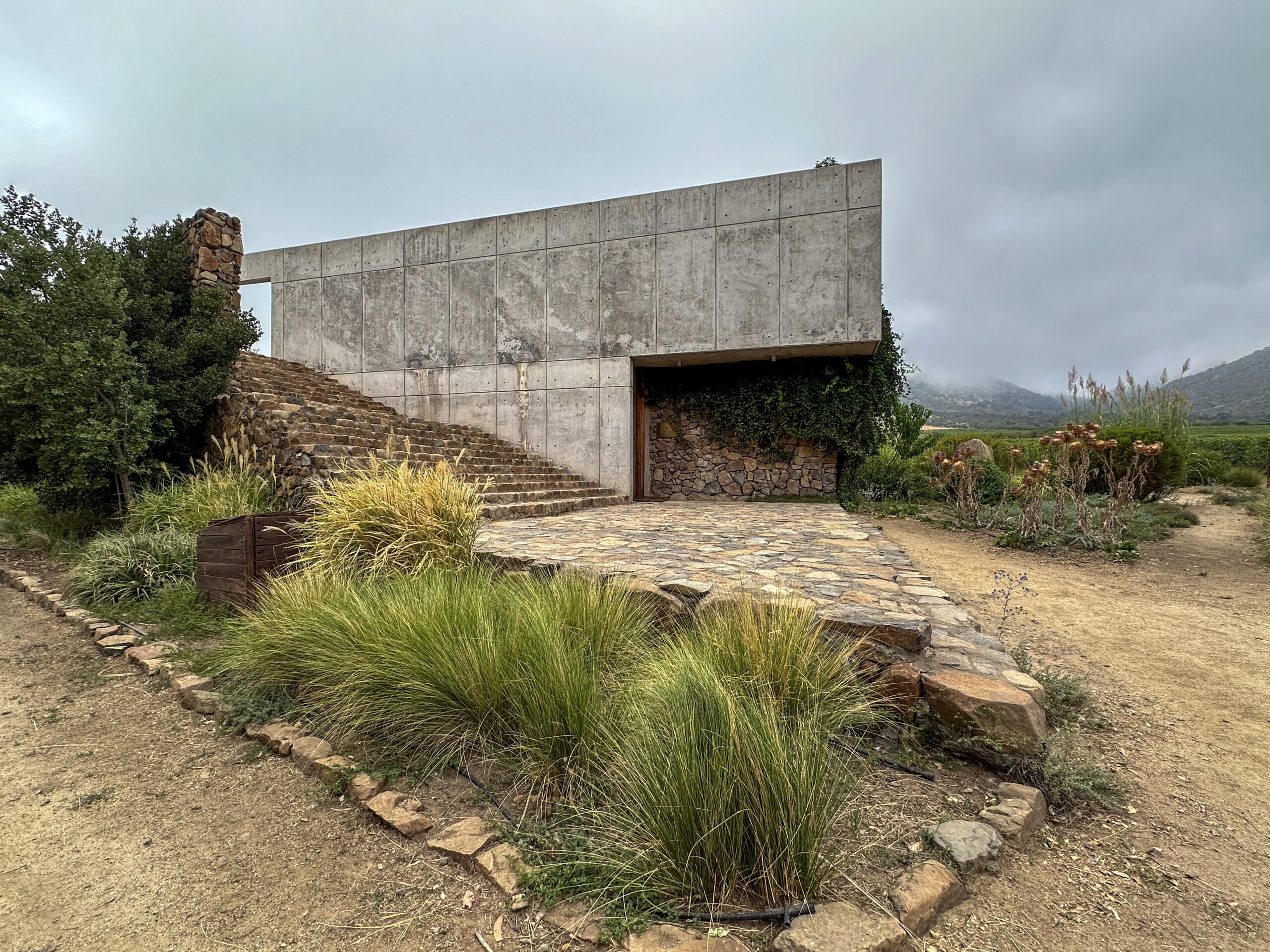
Courtesy of Lauren Mowery.
The brand’s origin ties to 1885 when Francisco Undurraga imported grapes from France and Germany, including Bordeaux varieties. For six generations, Undurraga and his descendants successfully made, marketed, and sold wine abroad, including as Chile’s first brand to export to the USA as early as 1903. In 2006, Alfonso Undurraga bought Los Lingues, a farm at the foot of the Andes Mountains in Colchagua and began planting vineyards with his son Cristóbal to start Viña Koyle. Koyle transitioned to biodynamic viticulture in 2009, earning Demeter certification in 2015. On the distinct volcanic soils of Los Lingues, the company grows 100% red varieties dominated by Cabernet Franc and Carmenère, plus some Bordeaux and Rhône grapes.
Wine to Find: Koyle, Auma, Red Blend, Los Lingues, Colchagua Valley
Vina Maitia
Frenchman David Marcel, along with his Chilean wife Loreto, makes wine for small artisan label Viña Maitia based in the Maule Valley. Marcel, born in French Basque Country, has been involved in Chilean wine for many years. He was one of the first winemakers in Chile to succeed in the production of quality craft Pipeño, starting with the 2013 vintage, and a Carignan called Weon, starting in 2016. The combination of the traditional production method and the traditional grape varieties lead to unique, herbal, and quaffable wines that also represent great value.
Wine to Find: Vina Maitia, ‘Weon’, Carignan, Maule Valley
Miguel Torres
Miguel Torres started as a wine industry trailblazer in his home country of Spain, showing early leadership in the move towards sustainability. In 1979, Torres landed in Chile’s Curicó Valley in search of a new winemaking experience. Torres eventually expanded his Chilean footprint with wines from around the slender country, including the Cabernet-loving conditions of the Central Valley to the smaller, historic vineyards of Maule. Today, Miguel Torres Chile has committed to organic vineyard management and Fair Trade certification for various wines, as well as certified sustainable vineyard management as defined by Wines of Chile. Torres boasts 300 acres of certified organic vineyards with 42 acres in Curicó certified as regenerative.
Wine to Find: Cordillera de Los Andes, ‘Vigno’ Carignan, Maule Valley
Gonzalez Bastias
Daniela Lorenzo and Jose Luis Gonzales Bastias are the duo farming one of Chile’s oldest, continuously family-owned heritage vineyards of Pais. They farm almost ten acres of seventh generation Pais that was planted over two centuries ago. Their land frames the southern shore of the Maule River in the Western Maule Valley. They have a winery and cellar on the property where they produce minimalist, natural expressions of their heritage grapes. The soil contains river stones on top of a granite bedrock. Gonzales Bastias produces singular examples of age-worthy, estate-grown Pais-centric wines. The brand is steeped in historical and cultural relevance and remains a reference point for Chilean Wine.
Wine to Find: Gonzalez Bastias, ‘Tinaja’, Pais, Maule Valley
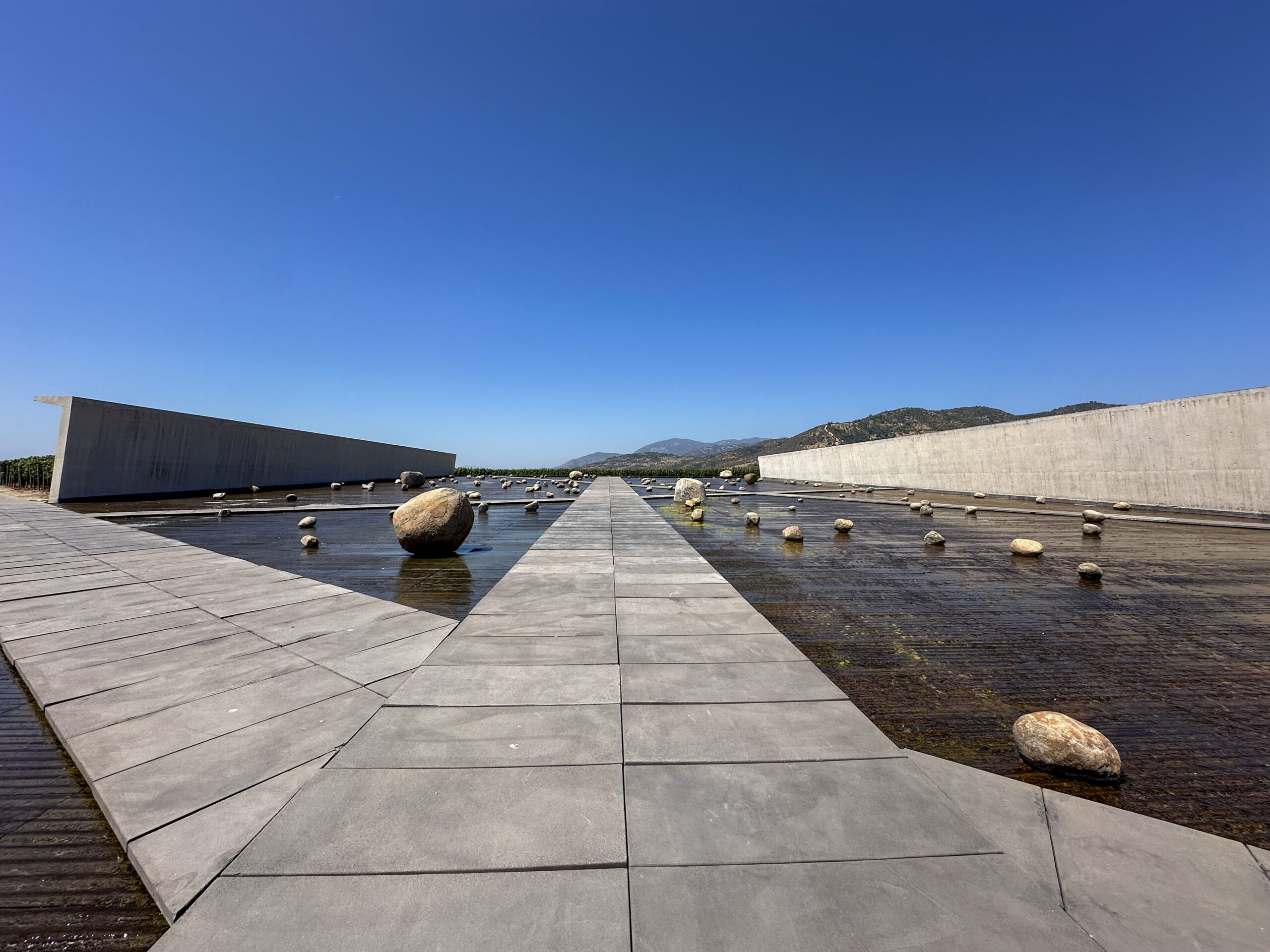
Courtesy of Lauren Mowery.
VIK
Located in Millahue in the Cachapoal Valley, VIK stands out among its peers as a vineyard, architectural winery, and design-forward boutique hotel with local, sustainable dining. This blend of art, hospitality, and fine wine has garnered VIK numerous international awards. While the property serves visitors a visual feast, the wines offer just as much power and substance. Under one roof, VIK tackles multiple projects in an effort to develop a circular winemaking strategy, from toasting and building its own barrels from fallen oak trees, to firing amphora using clay from the property. Wines ferment with native yeast. The latest project of Chief Winemaker Cristian Vallejo is Stone VIK, a wine made naturally from an organic vineyard, then aged in amphora buried in the center of a stand of nearby trees to connect it to nature and environmental vibrations, then finished in local oak.
Wine to Find: Stone Vik, Red Blend, Cachapoal Valley, 2023
Garage Wine Co.
The mission of Garage Wine Co., founded by Derek Mossman and Pilar Miranda, is to revive old vineyards and practice regenerative farming while working closely with local communities. They’re one of the most exciting labels seeking to preserve the living patrimony of Chile’s heritage vines, and they’ve largely succeeded, making a wildly successful name for the brand within the artisan and natural wine circles of Chile and globally.
Wine to Find: Garage Wine Co., 215 BC Ferment, Pais, Secano Interior, Cauquenes, Maule Valley
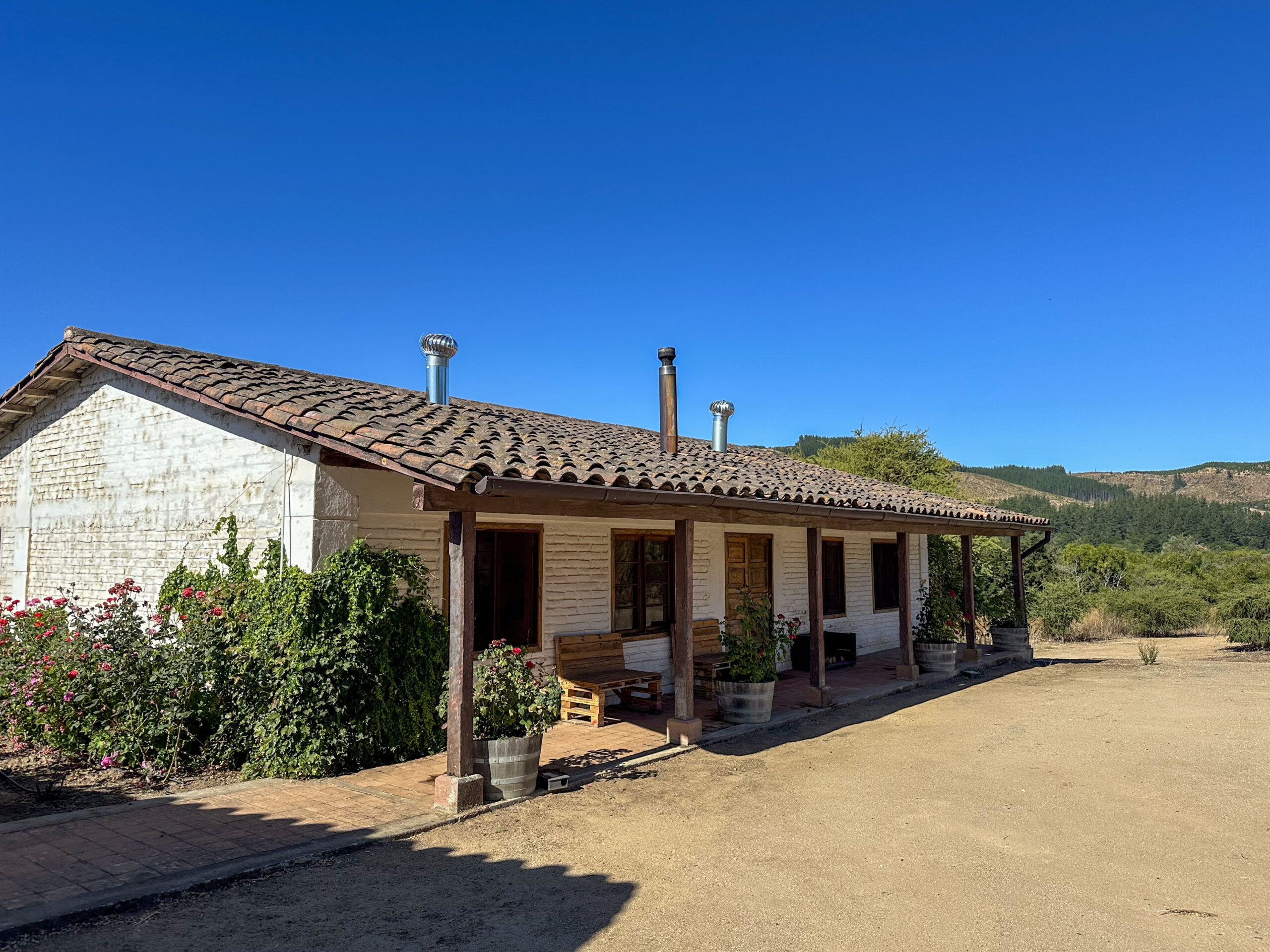
Courtesy of Lauren Mowery.
Bouchon Family Wines
One of Chile’s most exciting wine producers, Bouchon, helped develop one of the country’s most exciting regions, Maule. Despite being tapped into the current winemaking trends (minimal cellar work, fun labels, small production), the family has a long legacy in wine. The origin story dates to 1877 when winemaker Emile Bouchon arrived in Chile from St Émilion. The present-day winery, founded in 1977, has carried the torch for four generations, championing the techniques of old vine dry-farming–which reap lower yields but higher quality wine–all along. While they have a diverse portfolio that includes Bordeaux varieties, País and Sémillon thrive while providing a point of difference in their portfolio. Bouchon is certified sustainable by the Chilean Wine Association and farms two of its three vineyards–Mingre and Santa Rosa–organically.
Wine to Find: J. Bouchon, Semillon ‘Granito’, Maule Valley
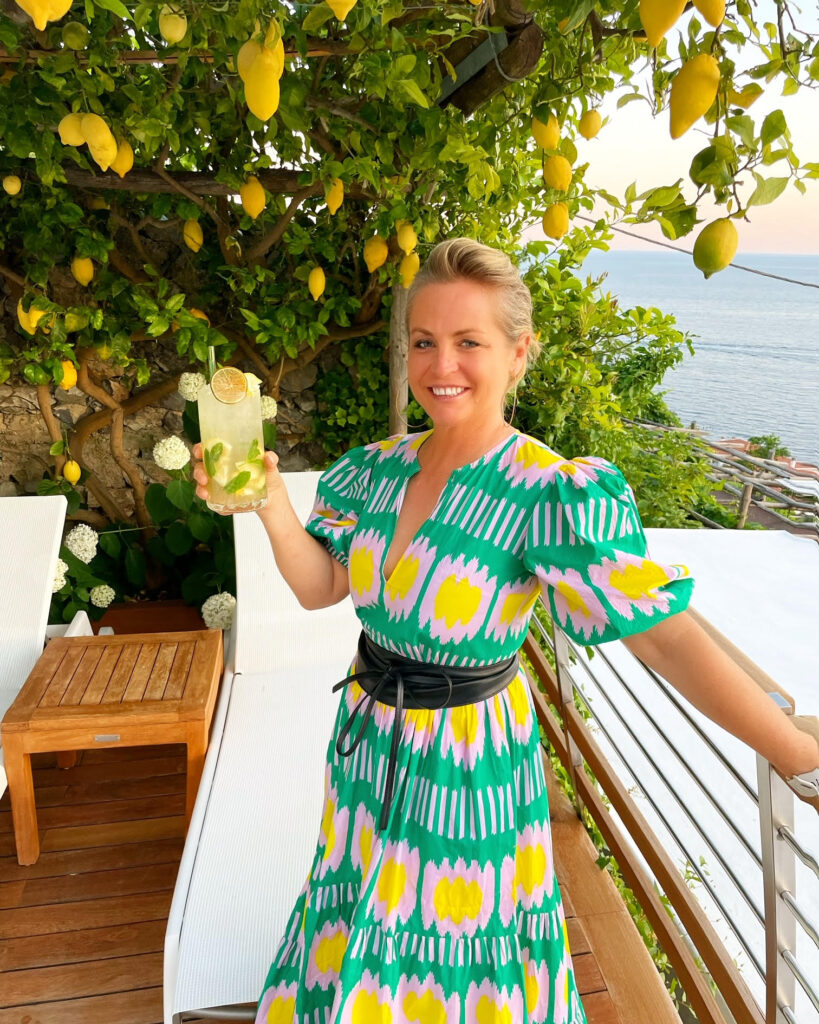
Founder and CEO of Azure Road, Lauren Mowery is a longtime wine, food, and travel writer. Mowery continues to serve on Decanter Magazine’s 12-strong US editorial team. Prior to joining Decanter, she spent five years as the travel editor at Wine Enthusiast. Mowery has earned accolades for her writing and photography, having contributed travel, drinks, food, and sustainability content to publications like Food & Wine, Forbes, Afar, The Independent, Saveur, Hemispheres, U.S. News & World Report, SCUBA Diving, Plate, Chef & Restaurant, Hotels Above Par, AAA, Fodors.com, Lonely Planet, USA Today, Men’s Journal, and Time Out, among others.
Pursuing her Master of Wine certification, she has also been a regular wine and spirits writer for Tasting Panel, Somm Journal, VinePair, Punch, and SevenFifty Daily. Mowery is a graduate of the University of Virginia and Fordham Law School, and she completed two wine harvests in South Africa.
Follow her on Instagram @AzureRoad and TikTok @AzureRoad


